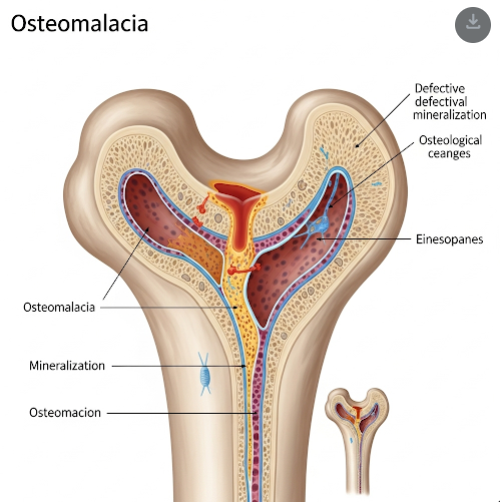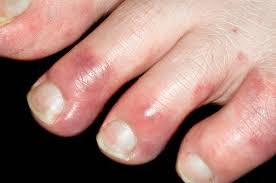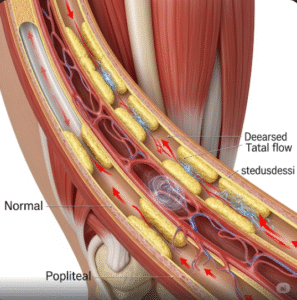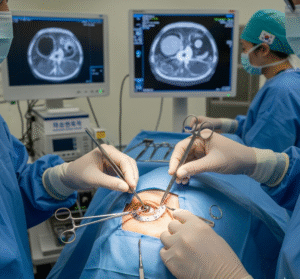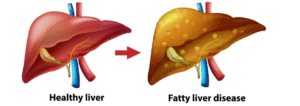Overview
Osteomalacia is a bone disorder characterized by the softening of bones due to defective bone mineralization, primarily caused by vitamin D deficiency. This condition leads to bone pain, muscle weakness, and an increased risk of fractures. In Korea, osteomalacia is diagnosed and treated through a combination of clinical assessment, laboratory tests, and imaging, with effective supplementation and lifestyle modifications available to restore bone health.
What is Osteomalacia?
Osteomalacia refers to the inadequate mineralization of bone matrix in adults, resulting in softened bones that are more prone to bending and fractures. It differs from osteoporosis, which involves loss of bone density. The most common cause is a deficiency of vitamin D, which is essential for calcium absorption and bone mineralization.
Symptoms
Symptoms of osteomalacia often develop gradually and may include:
- Diffuse bone pain and tenderness
- Muscle weakness, particularly in the hips and legs
- Difficulty walking or a waddling gait
- Fractures occurring with minimal trauma
- Fatigue and general weakness
Causes
The primary causes of osteomalacia include:
- Vitamin D deficiency due to inadequate dietary intake, limited sun exposure, or malabsorption
- Disorders affecting vitamin D metabolism, such as kidney or liver disease
- Certain medications that interfere with vitamin D metabolism
- Rare inherited disorders affecting phosphate metabolism
Risk Factors
Factors increasing the risk of osteomalacia include:
- Poor nutrition or vitamin D deficiency
- Limited exposure to sunlight, especially in elderly or indoor-bound individuals
- Malabsorption syndromes such as celiac disease or Crohn’s disease
- Chronic kidney or liver diseases
- Use of anticonvulsants or other drugs affecting vitamin D metabolism
Complications
If untreated, osteomalacia can lead to:
- Bone deformities and fractures
- Chronic pain and disability
- Muscle weakness affecting mobility
- Increased risk of falls and related injuries
Prevention
Osteomalacia can often be prevented by:
- Ensuring adequate vitamin D intake through diet or supplements
- Regular, safe exposure to sunlight
- Managing underlying health conditions that affect vitamin D metabolism
- Routine screening in at-risk populations
Treatment Options in Korea
In Korea, osteomalacia is treated with a focus on correcting vitamin D deficiency and addressing underlying causes:
- Vitamin D supplementation, often combined with calcium, to restore mineral levels
- Dietary counseling to ensure adequate intake of vitamin D and calcium-rich foods
- Treatment of underlying conditions such as malabsorption or kidney disease
- Physical therapy to improve muscle strength and mobility in affected individuals
- Regular monitoring through blood tests and imaging to assess treatment response
Korean healthcare centers utilize advanced diagnostic techniques and offer personalized treatment plans to effectively manage osteomalacia and improve patients’ bone health and quality of life.

